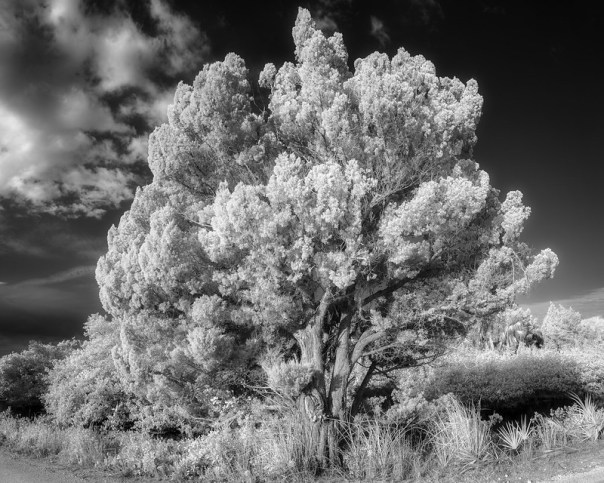I’ve just about finished going through the photos from my trip to South Florida. I ended up with many images I like – way too many for a single post. Today, I’d like to complete what I started in the Wild Baby Gators! blog with a few more photos from the Shark Valley area of the Everglades. Next week I’ll finish my trip report with images from other parts of Big Cypress.
In a couple of spots along the north side of Tamiami Trail a few miles east of the entrance to Shark Valley visitor center, you can cross over the canal and drive along the dirt road on top of the berm. From there you can get a good look at the “River of grass”, stretching farther than you can see.
 River of grass – looking north
River of grass – looking north
I tried to stop by Shark Valley on my first afternoon in the area. But the parking lot was full and there was a line of cars waiting to get in, so I turned around and explored elsewhere. At 8:30 the next morning I was first in line waiting for the park to open. I bought a ticket for one of their two hour tram rides and was on the first one to leave. If you go, arrive early to make sure you can get in. I think taking the first tram ride of the day is a good idea too. Wildlife should be more active / visible and the light is better for photography.
 Crowded airspace – Glossy Ibis and Roseate Spoonbill in flight. This was close to a small pond where a bird feeding frenzy was in progress.
Crowded airspace – Glossy Ibis and Roseate Spoonbill in flight. This was close to a small pond where a bird feeding frenzy was in progress.
There was a lot to see on the ride and the tour guide was excellent. He knew where to spot things and passed along a great deal of info to everyone. The tram stops for about 20 minutes at the 65 foot observation tower. There’s a wonderful view there too. If you zoom into this next photo, you can see two large alligators floating in the pond.
 River of grass 2 – The view looking ~ SE from the observation Tower in Shark Valley
River of grass 2 – The view looking ~ SE from the observation Tower in Shark Valley
The water and trees around the tower are full of wildlife. I spotted this Yellow-crowned Night Heron there. I’m going to count this as a life bird (first sighting). I saw one before, but it was outside the US (in Costa Rica). I also saw what may have been a juvenile at Viera Wetlands, but it was an iffy ID.
There are lots of turtles and alligators along the way.
 Happy together – A pair of yellow-bellied sliders soaking in some sunshine
Happy together – A pair of yellow-bellied sliders soaking in some sunshine
And you’ll probably see some “circle of life” scenes too.
 Lunch time – Great Blue Heron with a Florida Gar
Lunch time – Great Blue Heron with a Florida Gar
We also spotted Cormorants, Anhingas, Great and Snowy Egrets, Tri-colored and Little Blue Herons, White Ibis, Wood Storks, Red-shouldered hawks, a Purple Gallinule, and other birds. We didn’t see any pythons, but you can tell they’re out there because many of the smaller mammals have disappeared – eaten by these large snakes.
To summarize: Shark Valley is definitely a Central Florida Photo Ops “Must do” location and I’m going to visit again.
You can view my other Everglades National Park photos in this album on Flickr. And I’ve started to collect photos from the Big Cypress area in this album.
Thanks for stopping by and reading my blog. Now – go make some photos!
©2020, Ed Rosack. All rights reserved
























































